Today’s Current Affairs: 15th Jun 2023 for UPSC IAS exams, State PSC exams, SSC CGL, State SSC, RRB, Railways, Banking Exam & IBPS, etc
Table of Contents
Jellyfish Galaxy JO206 : NASA Released An Image
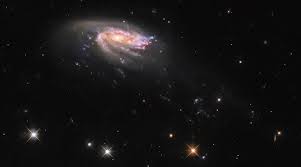
NASA released an image showcasing the jellyfish galaxy JO206 which was captured by the Hubble telescope.
- Jellyfish Galaxy (JO206) trails across the universe about 700 million light-years away from our planet.
- It is in the constellation Aquarius.
- Jellyfish galaxies resemble their marine namesakes and that is evident in the image.
- At the bottom right in the image “tentacles” of bright star formation that trails the main disc of the galaxy are visible.
- Aquarius constellation is one of the 12 zodiac constellations.
- The constellation’s name means “the water-bearer” (or “cup-bearer”) in Latin.
- It lies in the region of the sky which is sometimes referred to as the Sea, because it contains a number of other constellations with names associated with water.
- It is the 10th largest constellation in the sky, occupying an area of 980 square degrees.
- It is one of the 15 equatorial constellations.
Anjadip : Anti-Submarine Warfare Shallow Water Craft

‘Anjadip’, the 3rd of eight ships of the Anti-Submarine Warfare Shallow Water Craft (SWC) Project being built by Kolkata-based Garden Reach Shipbuilders and Engineers (GRSE) for the Indian Navy, was recently launched.
- Anjadip Shallow Water Craft is an anti-submarine warfare shallow watercraft vessel built for the Indian Navy.
- It was built by the Kolkata-based Garden Reach Shipbuilders and Engineers (GRSE).
- Anjadip is the third of the eight ships of the contract that was signed between Garden Reach Shipbuilders and Engineers, Kolkata and the Ministry of Defence in April 2019.
- The vessel was named after the island of Anjadip, located off Karwar Port, Karnataka, signifying its strategic maritime importance.
- It is designed to undertake anti-submarine operations in coastal waters, low intensity maritime operations and subsurface surveillance among others.
- The ship is a 900-ton, 77-metre-long vessel powered by water-jet propulsion.
- It can achieve a maximum speed of 25 knots (46 km/h) and has an endurance of 1,800 nautical miles (3,300 km) at 14 knots (26 km/h).
- The crew consists of 57 members, including seven officers and 50 sailors.
- It is equipped with an Anti-submarine Combat Suite, potentially the DRDO-developed IAC MOD’C’, a Hull Mounted Sonar, and a Low-frequency Variable depth Sonar.
Pradhan Mantri Matru Vandana Yojana : God Bharai Ceremony
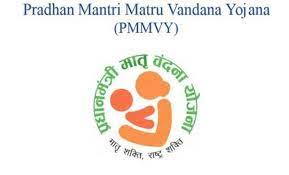
The Prime Minister of India has lauded the new initiative of celebrating ‘Pradhan Mantri Matru Vandana Yojana’ as ‘God Bharai’ ceremony in Dausa, Rajasthan.
- PM Matru Vandana Yojana is a Centrally Sponsored Direct Benefit Transfer (DBT) scheme launched in 2017.
- Objectives is providing partial compensation for the wage loss in terms of cash incentive, so that the woman can take adequate rest before and after delivery of the first child and to improve health-seeking behaviour amongst Pregnant Women & Lactating Mothers (PW&LM).
- The scheme is to provide maternity benefits to women belonging to socially and economically disadvantaged sections of society.
- The maternity benefit is to be provided to a woman for the first two living children provided the second child is a girl
- Under this scheme monetary benefit of Rs. 5,000 is given to the expecting mothers from the time of the initial stage of pregnancy to till the time the child is born.
- Additionally, Rs. 1,000 is provided under the Janani Suraksha Yojana post-institutional delivery.
- The Rs. 5,000 is provided in three installments.
- The first installment of Rs. 1,000 is paid at the time of registration of the pregnancy.
- The second installment of Rs. 2,000 is paid at the time of completing 6 months of pregnancy and receiving at least one antenatal checkup.
- The third installment of Rs. 2,000 is received after the birth and registration of birth of such child and after such child receives the first cycle of immunization for BCG, OPV, DPT and Hepatitis-B.
Supreme Audit Institutions Summit:

The Comptroller and Auditor General (CAG) of India recently said that Supreme Audit Institutions (SAIs) must inevitably prepare themselves for auditing AI-based governance systems and look for opportunities to adopt AI into their audit techniques.
- Supreme Audit Institutions (SAIs) are public oversight institutions which audit a government’s use of public funds.
- They are a critical link in a country’s accountability chain.
- By scrutinizing public financial management and reporting they provide assurance that resources are used as prescribed.
- Most SAIs derives their mandate from the constitution and/or legislation.
- SAIs undertakes financial audits of organizations’ accounting procedures and financial statements, and compliance audits reviewing the legality of transactions made by the audited body.
- They also conduct performance audits to scrutinize the efficiency, effectiveness or economy of government’s undertakings.
- The Comptroller and Auditor General (CAG) of India is India’s SAI.
20 New Species Of Sea Lettuce:
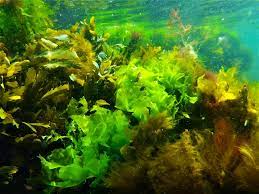
Researchers have recently discovered 20 new species of Sea lettuce along the Baltic and Scandinavian coasts.
- Sea Lettuce(Ulva lactuca) is commonly referred to as seaweed.
- It is a genus of green algae usually found growing on rocky shores of seas and oceans around the world.
- Some species of Sea lettuce also grow in brackish water rich in organic matter or sewage and can accumulate heavy metals.
- It usually grows attached by a small discoid holdfast to rocks and shells, but it can also grow in a free-floating, non-attached form, sometimes in prolific masses.
- It needs a lot of sunlight to flourish.
- It is perennial, and grows all year, although the largest blooms occur during the summer.
- Large masses of sea lettuce are often an indicator of nutrient pollution in the water.
- In some parts of the world, people eat sea lettuce in soups and salads.
- It resembles leaves of green lettuce.
- The color is often bright green but can range from dark green to almost yellow.
- The leaves can be narrow or broad and single or multi-lobed.
- They’re often rounded or oval with ruffled edges and riddled with holes or perforations.
Gravitationally Lensed : Captured Image
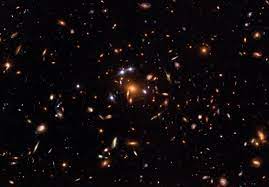
Astronomers have recently captured four images of the same background supernova being gravitationally lensed by the immense gravitational well of the foreground supernova.
- Gravitational Lensing occurs when a massive celestial body, such as a galaxy cluster, causes a sufficient curvature of spacetime for the path of light around it to be visibly bent, as if by a lens.
- The body causing the light to curve is accordingly called a gravitational lens.
- An important consequence of this lensing distortion is magnification, allowing us to observe objects that would otherwise be too far away and too faint to be seen.
- Gravitational Lensing was first predicted in 1915 by Albert Einstein, which involves the bending of light by objects of great mass.
- According to Einstein’s general theory of relativity, time and space are fused together in a quantity known as spacetime.
- Within this theory, massive objects cause spacetime to curve, and gravity is simply the curvature of spacetime.
- As light travels through spacetime, the theory predicts that the path taken by the light will also be curved by an object’s mass.
- Gravitational lensing is a dramatic and observable example of Einstein’s theory in action.
- Extremely massive celestial bodies such as galaxy clusters cause spacetime to be significantly curved. In other words, they act as gravitational lenses.
SIPRI : Annual Assessment

The Stockholm International Peace Research Institute (SIPRI) has released its annual assessment, highlighting the increase in nuclear weapons as countries pursue force modernization and expansion plans.
Findings :
- Nine nuclear-armed states USA, Russia, UK, France, China, India, Pakistan, North Korea, Israel. USA and Russia possess almost 90% of all nuclear weapons
- Deployed Nuclear Warheads is USA (Largest number)> Russia> France > UK
- Total Inventory of Nuclear Warheads Russia is (Highest total inventory)> USA> China
- Countries with No Deployed Nuclear Warheads are India, China, Pakistan, North Korea and Isreal
- India’s Nuclear Warhead Stockpiles is Total: 164; India and Pakistan are Expanding nuclear arsenals and the Development of new types of nuclear delivery systems
- The decline in Nuclear Warheads Primarily due to the dismantling of retired warheads by the USA and Russia
About SIPRI:
- Stockholm International Peace Research Institute (HQ: Solna, Stockholm, Sweden; est. 1966) is an independent international institute based in Stockholm.
- It provides data, analysis and recommendations for armed conflict, military expenditure and arms trade as well as disarmament and arms control.
Menhir And Megalithic : Burial Sites At Kodumanal
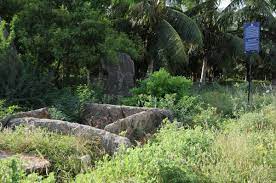
The Tamil Nadu Department of Archaeology declared five menhir and megalithic burial sites at Kodumanal in Erode district as protected monuments.
- Menhirs are upright stones from the Megalithic period.
- They are erected above a burial site or near a burial site as a memorial.
- Megaliths are large stones that are used to construct a structure or monument, either alone or together with other stones.
- Megaliths were constructed as either burial sites or commemorative
- The construction of these structures took place mainly in the Neolithic period. It continued into the Chalcolithic period and the Bronze Age.
- In India: archaeologists trace the majority of the megaliths to the Iron Age (1500 BC to 500 BC), though some sites precede the Iron Age, extending up to 2000 BC
- Megaliths are spread across the Indian subcontinent.
- The majority of megalithic sites are found in Peninsular India.
- It is concentrated in the states of Maharashtra , Karnataka, Tamil Nadu, Kerala, Andhra Pradesh, and Telangana
Kanya Shiksha Pravesh Utsav:
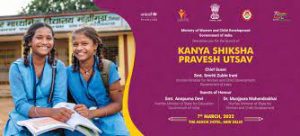
Union Ministry of Women and Child Development (WCD) have brought back 1 lakh girls into the mainstream education system under the `Kanya Shiksha Pravesh Utsav’’.
- Kanya Shiksha Pravesh Utsav was launched by the Ministry of Women and Child Development (MoWCD), in partnership with the Ministry of Education and UNICEF
- Objective is Enhancing enrolment and retention of girls between 11-14 years of age in school.
- The initiative intends to build on the existing schemes and programmes like Schemes for Adolescent Girls (SAG), BetiBachaoBetiPadhao (BBBP) and National Education Policy (NEP) to work on a comprehensive system for out-of-school girls.
- Now Ministry of Women and Child Development has decided to club together three programmes under a new scheme — Anganwadi services, poshan Abhiyan and scheme for adolescent girls — since all these had the same nutritional targets.”
- In the new scheme, a new category is created in which adolescent girls between 14 and 18 years are covered.




